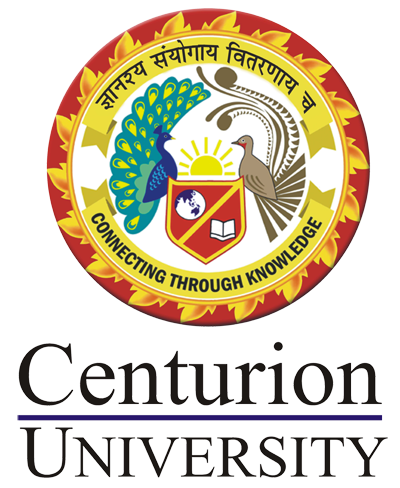INSTRUMENTAL METHODS OF ANALYSIS (THEORY)
Course Attendees
Still no participant
Course Reviews
Still no reviews
Course Name : INSTRUMENTAL METHODS OF ANALYSIS
Code(Credit): BPHT4101(4-0-0)
Course Objectives
- This subject deals with the application of instrumental methods in qualitative and quantitative analysis of drugs.
- This subject is designed to impart fundamental knowledge of the principles and instrumentation of spectroscopic and chromatographic techniques.
- This also emphasizes theoretical and practical knowledge of modern analytical instruments that are used for drug testing.
Learning Outcomes
- Understand the interaction of matter with electromagnetic radiations and its applications in drug analysis.
- Understand the chromatographic separation and analysis of drugs.
- Perform quantitative & qualitative analysis of drugs using various analytical instruments.
Course Syllabus
MODULE –I
UV Visible spectroscopy
Electronic transitions, chromophores, auxochromes, spectral shifts, the solvent effect on absorption spectra, Beer and Lambert’s law, Derivation, and deviations.
Instrumentation - Sources of radiation, wavelength selectors, sample cells, detectors- Photo tube, Photomultiplier tube, Photovoltaic cell, Silicon Photodiode.
Applications - Spectrophotometric titrations, Single-component and multi-component analysis
Fluorimetry
Theory, Concepts of singlet, doublet and triplet electronic states, internal and external conversions, factors affecting fluorescence, quenching, instrumentation, and applications
MODULE –II
IR spectroscopy
Introduction, fundamental modes of vibrations in polyatomic molecules, sample handling, factors affecting vibrations
Instrumentation - Sources of radiation, wavelength selectors, detectors - Golay cell, Bolometer, Thermocouple, Thermister, Pyroelectric detector and applications
Flame Photometry
Principle, interferences, instrumentation and applications
Atomic absorption spectroscopy
Principle, interferences, instrumentation, and applications
Nepheloturbidometry-
Principle, instrumentation, and applications
MODULE –III
Introduction to chromatography
Adsorption and partition column chromatography-
Methodology, advantages,disadvantages and applications.
Thin-layer chromatography-
Introduction, Principle, Methodology, Rf values, advantages, disadvantages, and applications.
Paper chromatography-
Introduction, methodology, development techniques, advantages, disadvantages, and applications
Electrophoresis–
Introduction, factors affecting electrophoretic mobility, Techniques of paper, gel, capillary electrophoresis, applications
MODULE-IV
Gas chromatography -
Introduction, theory, instrumentation, derivatization, temperature programming, advantages, disadvantages and applications
High-performance liquid chromatography (HPLC)-
Introduction, theory, instrumentation, advantages and applications.
MODULE –V
Ion exchange chromatography-
Introduction, classification, ion exchange resins, properties, mechanism of the ion exchange process, factors affecting ion exchange, methodology and applications
Gel chromatography-
Introduction, theory, instrumentation, and applications
Affinity chromatography-
Introduction, theory, instrumentation, and applications
REFERENCE BOOKS-
- Instrumental Methods of Chemical Analysis by B.K.Sharma
- Organic Spectroscopy by Y.R. Sharma
- Text book of Pharmaceutical Analysis by Kenneth A. Connors
- Vogel's Text book of Quantitative Chemical Analysis by A.I.Vogel
- Organic Spectroscopy by William Kemp
- Spectrophotometric identification of Organic Compounds by Silverstein
Session Plan
Session 1
UV Visible spectroscopy
Electronic transitions, chromophores, auxochromes, spectral shifts
Pdf: ELECTRON TRANSITIONS,AUXOCHROMES
VIDEO:
Session 2
UV Visible spectroscopy
solvent effect on absorption spectra,
Beer and Lambert’s law, Derivation and deviations
Session 3
UV Visible spectroscopy
Instrumentation - Sources of radiation, wavelength selectors, sample cells, detectors- Photo tube, Photomultiplier tube, Photovoltaic cell, Silicon Photodiode.
Session 4
UV Visible spectroscopy
Applications - Spectrophotometric titrations,
Single-component, and multi-component analysis
PDF: Applications of UV Spectroscopy
Spectrophotometric Titrations and their application in Single-Component and Multi-Component Analysis
Session 5
FLUORIMETRY
Introduction and Theory
Session 6
Fluorimetry
Concepts of singlet, doublet and triplet electronic states
Session 7
Fluorimetry
Internal and external conversions,
Factors affecting fluorescence
Session 8
Session 9
Session 10
IR spectroscopy
Introduction,
Fundamental modes of vibrations in polyatomic molecules
PDF: IR (Infrared) Spectroscopy, Introduction and Fundamental Modes of Vibration in Polyatomic Molecules
Session 11
IR spectroscopy
Sample handling in IR spectroscopy,
Factors affecting vibrations
PDF: Sample Handling in IR Spectroscopy and Factors Affecting Vibrations
Session 12
IR spectroscopy
Instrumentation - Sources of radiation, wavelength selectors,
Session 13
Session 14
IR spectroscopy
Detectors
Thermocouple, Thermister, Pyroelectric detector
Session 15
Session 16
Session 17
Flame Photometry-
Instrumentation of Flame Photometry
Applications of Flame Photometry
Session 18
Session 19
Atomic absorption spectroscopy
Instrumentation of Atomic absorption spectroscopy
Applications of Atomic absorption spectroscopy
Session 20
Session 21
Introduction to chromatography
PDF:Chromatography
Session 22
Adsorption and partition column chromatography-
Methodology
Session 23
Adsorption and partition column chromatography-
Advantages, disadvantages and applications
Session 24
Thin-layer chromatography-
Introduction, Principle, Methodology
Session 25
Thin-layer chromatography-
Rf values, advantages, disadvantages and applications
PDF: Thin Layer Chromatography Applications
Session 26
Paper chromatography-
Introduction, methodology
Session 27
Paper chromatography-
Development techniques, advantages, disadvantages and applications
PDF:Paper chromatography Development techniques, advantages, disadvantages and applications
Session 28
Session 29
Electrophoresis
Factors affecting electrophoretic mobility, Techniques of paper Electrophoresis
PDF:Factors Affecting Electrophoretic Mobility and Techniques of Paper Electrophoresis
Session 30
Electrophoresis
Techniques of gel electrophoresis,
Techniques of capillary electrophoresis
Applications of electrophoresis
Session 31
Session 32
Gas chromatography
instrumentation, derivatization, temperature programming
PDF:Instrumentation, Derivatization, and Temperature Programming
Session 33
Gas chromatography
Advantages, disadvantages and applications
Session 34
Session 35
Session 36
High-performance liquid chromatography (HPLC)
Principle
Session 37
High-performance liquid chromatography (HPLC)
Instrumentation
PDF:Instrumentation of High Performance Liquid Chromatography
Session 38
High-performance liquid chromatography (HPLC)
Advantages of HPLC
Applications of HPLC
PDF:Advantages and Applications of High Performance Liquid Chromatography
Session 39
Ion exchange chromatography
Introduction, classification
PDF:Introduction and classification of Ion Exchange Chromatography
Session 40
Ion exchange chromatography
Ion exchange resins, properties,
PDF:Ion Exchange Resins:Definition & Properties
Mechanism of the ion exchange process
PDF: Mechanism of the Ion Exchange Process in Ion Exchange Chromatography
Session 41
Ion exchange chromatography
Factors affecting ion exchange,
methodology and
Applications of Ion exchange chromatography
PDF:Factors affecting ion exchange ,methodology and Applications of Ion exchange chromatography
Session 42
Session 43
Gel chromatography
Instrumentation of Gel chromatography
Applications of Gel chromatography
Session 44
Session 45
Affinity chromatography
Instrumentation of Affinity chromatography
Applications of Affinity chromatography
PDF:Instrumentation and Applications of Affinity Chromatography


Recent Comments